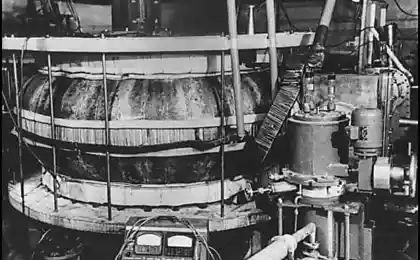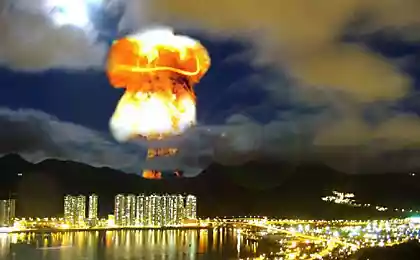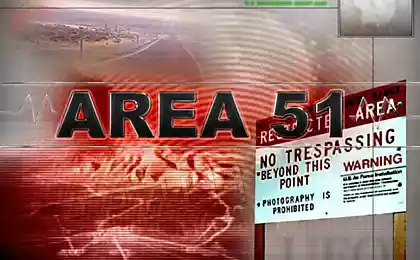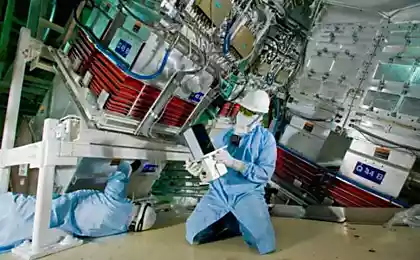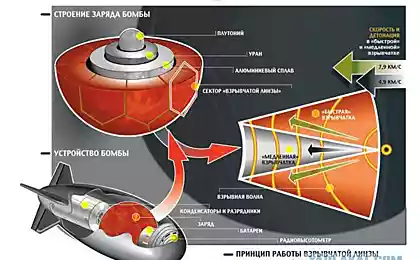901
Nat. complex laser fusion reactions
"Create a small star in the world" - this is the goal of National complex laser fusion reactions (NIF), which is the largest with the most powerful laser energy content, which is located in Livermore, California. September 29, 2010 NIF completed the first experiment on the ignition, in which 192 laser focused on a small cylinder with a capsule with frozen hydrogen fuel. This experiment was the latest in a series of tests that will lead to the long-awaited "ignition", when the nuclei of the atoms in the fuel capsule forced to merge, releasing tremendous energy. It is expected that the yield of fusion energy at the facility for the first time exceed the energy spent to start the reaction. It will be a valuable source of strength. The construction of NIF took more than 3, 5 billion in 1997, the complex is part of the Lawrence Livermore National Laboratory. Lawrence. Complete fusion scientists want to achieve by 2012.
26 photo + letter
via bigpicture
[next]
1. National complex laser fusion reactions dovozit elevator technicians to target chamber for inspection. The chamber is a balloon of 10 meters in diameter, assembled from aluminum panels 10 cm thick. It is covered with 3-meter layer of concrete impregnated with boron to absorb neutrons from the fusion reaction. Holes 192 in the chamber allow laser beams to enter the camera. (NIF / Lawrence Livermore National Laboratory)

2. The largest single item of equipment at the National complex laser fusion reactions - 130-tonne target chamber. Its design consists of 6 symmetric panels of medium size and 12 asymmetric outer panels that are poured on an aluminum plant in Reyvensvude, West Virginia. The panels were transferred to «Creusot-Loire Industries» in France, where they are heated and shaped like an enormous pressure. Then the panel was sent to «Precision Components Corp.» in York, Pennsylvania, where the welds were made. Then, the assembly was made the target chamber at Lawrence Livermore National Laboratory. Lawrence (pictured). (NIF / Lawrence Livermore National Laboratory)

3. The target chamber with a diameter of 10 meters put in place in June 1999. Circular vacuum chamber installed at Lawrence Livermore National Laboratory. Lawrence using one of the world's largest taps. (NIF / Lawrence Livermore National Laboratory)
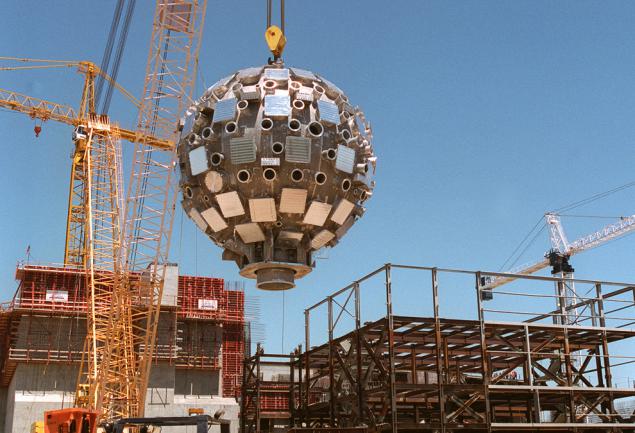
4. Builders to install equipment in the target chamber. (NIF / Lawrence Livermore National Laboratory)

5. Concrete stand in two rooms maintain system infrastructure beam 192 lasers. This is one of the two rooms, which are located at 96 lasers. (NIF / Lawrence Livermore National Laboratory)
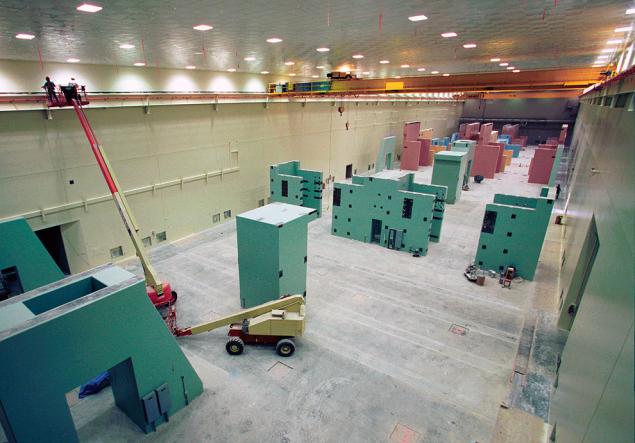
6. Installation of the maintenance of normal parameters of power, which is more than 160 km of high voltage cable through which power is supplied to the flash lamp system. (NIF / Lawrence Livermore National Laboratory)

7. Branch of laser №2. The laser beam is doing more than 304 meters, and then reaches the target chamber. Office laser №2 was commissioned on 31 July 2007. (NIF / Lawrence Livermore National Laboratory)

8. Production of fused glass tiles laser amplifier, necessary for the construction of NIF (3072 pieces) was completed in 2005. Tiles amplifier is a phosphate glass, blurred neodymium produced by «Hoya Corporation USA and Schott Glass Technologies». (NIF / Lawrence Livermore National Laboratory)
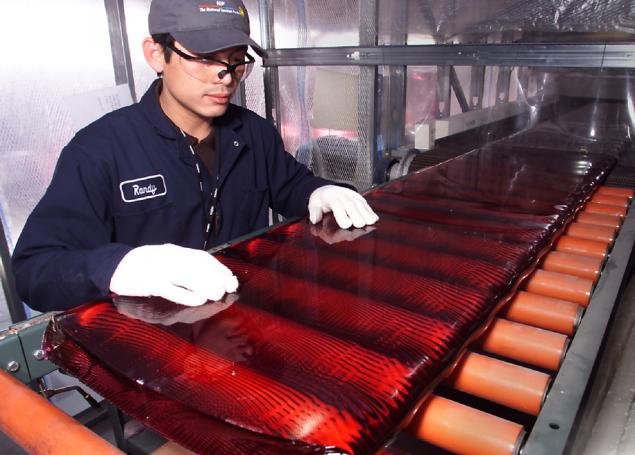
9. Techniques Livermore National Laboratory. Lawrence John Hollis (right) and Jim McElroy set a target camera in office in January 2009. This camera is the latest from 6206 of various opto-mechanical and controls system modules, which are called "exchangeable linear units." It was established September 26, 2001. (NIF / Lawrence Livermore National Laboratory)

10. NIF necessary optics, produced from the large single crystal of potassium dihydrogen phosphate and deuterated potassium dihydrogen phosphate. Each crystal is cut into 40-cm crystal panel. Traditionally, deuterated potassium dihydrogen phosphate is produced by, for almost two years that it was necessary to grow a single crystal. Over time, this time is reduced to two months. As a result of this process produced the optics to 66 cm wide, 50 cm in height and weighing 380 kg. Necessary optics 192 NIF produced from conventional deuterated potassium dihydrogen phosphate, and 480 from the optics of potassium dihydrogen phosphate. About 75 crystals will be able to achieve the weight almost 100 tonnes. (NIF / Lawrence Livermore National Laboratory)
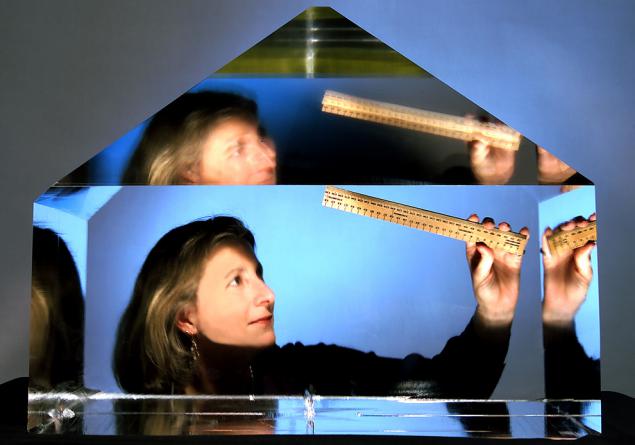
11. Workers on the floor of the chamber target NIF. (NIF / Lawrence Livermore National Laboratory / Jacqueline McBride)
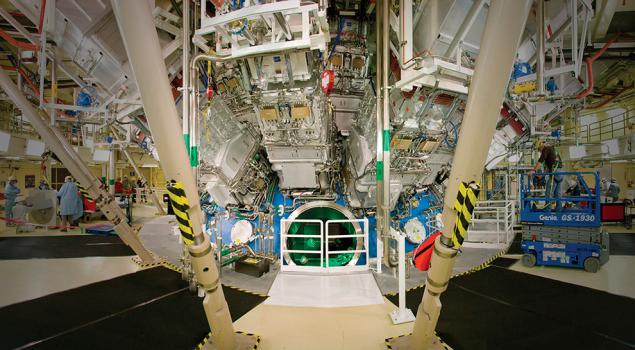
12. The technician makes last inspection system optics for NIF. When the system would get a 10-meter target chamber of the diagnostic arm, it can produce photos of all 192 laser beams. (NIF / Lawrence Livermore National Laboratory)

13. National complex laser fusion reactions in Livermore, California. Construction of the complex was completed in March 2009. (NIF / Lawrence Livermore National Laboratory)

14. Blocks final optics, which in this photo are arranged in the lower hemisphere of the target chamber, comprise a special optics for beam conditioning, color conversion and color separation. They also focus the beams with a 40x40 cm square plates in the same place on the target total 2x2 millimeter in diameter. (NIF / Lawrence Livermore National Laboratory)

15. Millimeter targets must meet the exact requirements of density, concentricity and surface smoothness. Scientists and engineers have developed accurate machine for the production and assembly of small and difficult targets. (NIF / Lawrence Livermore National Laboratory / Jacqueline McBride)

16. California Governor Arnold Schwarzenegger visited the National complex laser fusion reactions of 10 November 2008. From left to right: NIF director Edward Moses doctor, Schwarzenegger, LLNL director George Miller doctor. (NIF / Lawrence Livermore National Laboratory / Jacqueline McBride)

17. A recent survey of optics NIF, built into the target chamber, designed for the production of images of all 192 beams. (NIF / Lawrence Livermore National Laboratory)

18 photos taken from the floor of the target camera, shows the installation target. Laser pulse rush to the center of the target for the trillions of seconds at a distance of a human hair's breadth apart. (NIF / Lawrence Livermore National Laboratory)
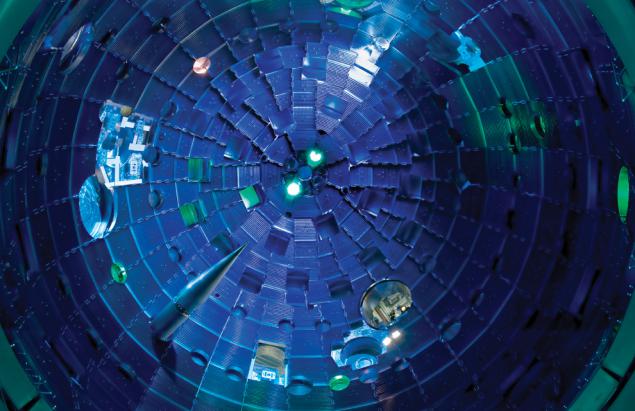
19. Locator goals and target alignment system accurately determine the target in the target chamber. (NIF / Lawrence Livermore National Laboratory)

20. A woman is holding the device with the cavity at the end. It is a cylinder the size of a pencil, which is the target - a round capsule no more peppercorns, which unites all 192 laser. (NIF / Lawrence Livermore National Laboratory)
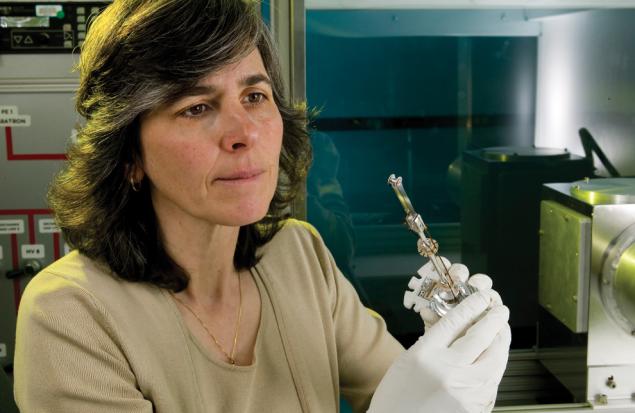
21. Golden cavity - a small hollow metal cylinder that surrounds the capsule with fuel. In thermodynamics, the term «hohlraum» is defined as "the cavity walls in radiative equilibrium with the radiation source in the cavity." This cavity carries directed energy from the laser beam or a particle beam in the X-ray radiation. (NIF / Lawrence Livermore National Laboratory)

22. The prototype of the capsule with beryllium target is suspended between two ultra-thin sheets of plastic. A tiny capsule will be filled with a liquid mixture of deuterium and tritium, which will be frozen to -255 degrees Celsius. Then, the laser beam 192 enter the cavity, creating X-rays which will heat the capsule to a temperature close to the temperature of sun. This will create tremendous pressure that surrendering fuel capsule, causing the atoms inside the merge and release energy. (NIF / Lawrence Livermore National Laboratory)

23. October 6, 2010 with the target block with a cavity in a tiny capsule installed in the cryogenic target manipulator. The two copper handles formed a shield around the cold target to protect it until it does not open in about five seconds before the shot. (NIF / Lawrence Livermore National Laboratory)

24. Locator pinpoints the center of the target, and serves as a reference to the connection of the laser beams. (NIF / Lawrence Livermore National Laboratory)

25. This is what's left of a target block after shot 6 October 2010. The system 192 of laser beam energy of the laser shot in one megajoule in the first cryogenic capsule. 1 megajoule is the energy consumed 10,000,100-watt light bulbs for one second. (NIF / Lawrence Livermore National Laboratory)

26. Three floors separating the target and many lasers and diagnostic devices around the camera target. (NIF / Lawrence Livermore National Laboratory)
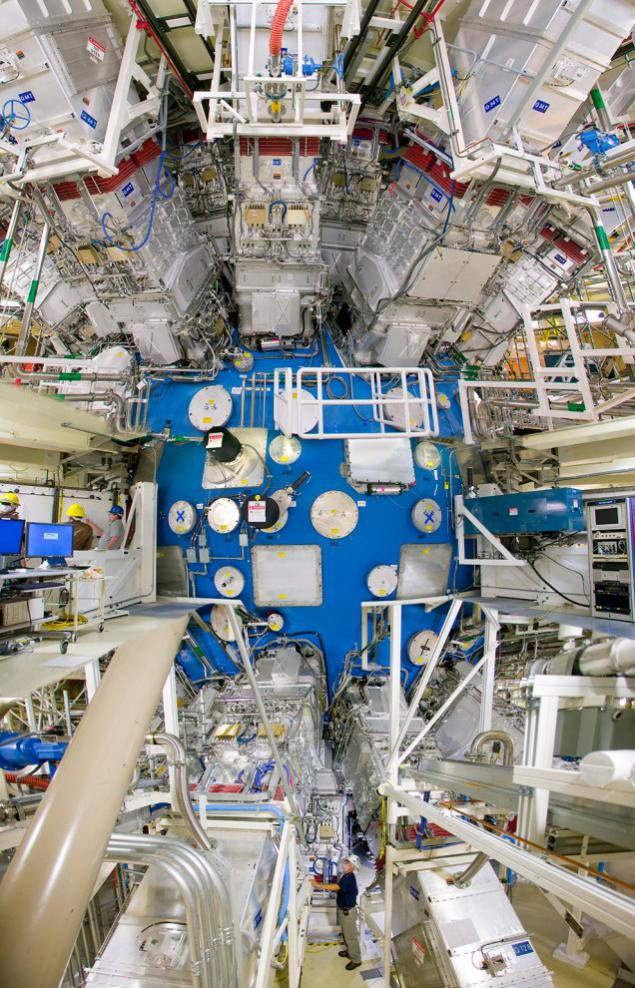
Source:
26 photo + letter
via bigpicture
[next]
1. National complex laser fusion reactions dovozit elevator technicians to target chamber for inspection. The chamber is a balloon of 10 meters in diameter, assembled from aluminum panels 10 cm thick. It is covered with 3-meter layer of concrete impregnated with boron to absorb neutrons from the fusion reaction. Holes 192 in the chamber allow laser beams to enter the camera. (NIF / Lawrence Livermore National Laboratory)

2. The largest single item of equipment at the National complex laser fusion reactions - 130-tonne target chamber. Its design consists of 6 symmetric panels of medium size and 12 asymmetric outer panels that are poured on an aluminum plant in Reyvensvude, West Virginia. The panels were transferred to «Creusot-Loire Industries» in France, where they are heated and shaped like an enormous pressure. Then the panel was sent to «Precision Components Corp.» in York, Pennsylvania, where the welds were made. Then, the assembly was made the target chamber at Lawrence Livermore National Laboratory. Lawrence (pictured). (NIF / Lawrence Livermore National Laboratory)

3. The target chamber with a diameter of 10 meters put in place in June 1999. Circular vacuum chamber installed at Lawrence Livermore National Laboratory. Lawrence using one of the world's largest taps. (NIF / Lawrence Livermore National Laboratory)

4. Builders to install equipment in the target chamber. (NIF / Lawrence Livermore National Laboratory)

5. Concrete stand in two rooms maintain system infrastructure beam 192 lasers. This is one of the two rooms, which are located at 96 lasers. (NIF / Lawrence Livermore National Laboratory)

6. Installation of the maintenance of normal parameters of power, which is more than 160 km of high voltage cable through which power is supplied to the flash lamp system. (NIF / Lawrence Livermore National Laboratory)

7. Branch of laser №2. The laser beam is doing more than 304 meters, and then reaches the target chamber. Office laser №2 was commissioned on 31 July 2007. (NIF / Lawrence Livermore National Laboratory)

8. Production of fused glass tiles laser amplifier, necessary for the construction of NIF (3072 pieces) was completed in 2005. Tiles amplifier is a phosphate glass, blurred neodymium produced by «Hoya Corporation USA and Schott Glass Technologies». (NIF / Lawrence Livermore National Laboratory)

9. Techniques Livermore National Laboratory. Lawrence John Hollis (right) and Jim McElroy set a target camera in office in January 2009. This camera is the latest from 6206 of various opto-mechanical and controls system modules, which are called "exchangeable linear units." It was established September 26, 2001. (NIF / Lawrence Livermore National Laboratory)

10. NIF necessary optics, produced from the large single crystal of potassium dihydrogen phosphate and deuterated potassium dihydrogen phosphate. Each crystal is cut into 40-cm crystal panel. Traditionally, deuterated potassium dihydrogen phosphate is produced by, for almost two years that it was necessary to grow a single crystal. Over time, this time is reduced to two months. As a result of this process produced the optics to 66 cm wide, 50 cm in height and weighing 380 kg. Necessary optics 192 NIF produced from conventional deuterated potassium dihydrogen phosphate, and 480 from the optics of potassium dihydrogen phosphate. About 75 crystals will be able to achieve the weight almost 100 tonnes. (NIF / Lawrence Livermore National Laboratory)

11. Workers on the floor of the chamber target NIF. (NIF / Lawrence Livermore National Laboratory / Jacqueline McBride)

12. The technician makes last inspection system optics for NIF. When the system would get a 10-meter target chamber of the diagnostic arm, it can produce photos of all 192 laser beams. (NIF / Lawrence Livermore National Laboratory)

13. National complex laser fusion reactions in Livermore, California. Construction of the complex was completed in March 2009. (NIF / Lawrence Livermore National Laboratory)

14. Blocks final optics, which in this photo are arranged in the lower hemisphere of the target chamber, comprise a special optics for beam conditioning, color conversion and color separation. They also focus the beams with a 40x40 cm square plates in the same place on the target total 2x2 millimeter in diameter. (NIF / Lawrence Livermore National Laboratory)

15. Millimeter targets must meet the exact requirements of density, concentricity and surface smoothness. Scientists and engineers have developed accurate machine for the production and assembly of small and difficult targets. (NIF / Lawrence Livermore National Laboratory / Jacqueline McBride)

16. California Governor Arnold Schwarzenegger visited the National complex laser fusion reactions of 10 November 2008. From left to right: NIF director Edward Moses doctor, Schwarzenegger, LLNL director George Miller doctor. (NIF / Lawrence Livermore National Laboratory / Jacqueline McBride)

17. A recent survey of optics NIF, built into the target chamber, designed for the production of images of all 192 beams. (NIF / Lawrence Livermore National Laboratory)

18 photos taken from the floor of the target camera, shows the installation target. Laser pulse rush to the center of the target for the trillions of seconds at a distance of a human hair's breadth apart. (NIF / Lawrence Livermore National Laboratory)

19. Locator goals and target alignment system accurately determine the target in the target chamber. (NIF / Lawrence Livermore National Laboratory)

20. A woman is holding the device with the cavity at the end. It is a cylinder the size of a pencil, which is the target - a round capsule no more peppercorns, which unites all 192 laser. (NIF / Lawrence Livermore National Laboratory)

21. Golden cavity - a small hollow metal cylinder that surrounds the capsule with fuel. In thermodynamics, the term «hohlraum» is defined as "the cavity walls in radiative equilibrium with the radiation source in the cavity." This cavity carries directed energy from the laser beam or a particle beam in the X-ray radiation. (NIF / Lawrence Livermore National Laboratory)

22. The prototype of the capsule with beryllium target is suspended between two ultra-thin sheets of plastic. A tiny capsule will be filled with a liquid mixture of deuterium and tritium, which will be frozen to -255 degrees Celsius. Then, the laser beam 192 enter the cavity, creating X-rays which will heat the capsule to a temperature close to the temperature of sun. This will create tremendous pressure that surrendering fuel capsule, causing the atoms inside the merge and release energy. (NIF / Lawrence Livermore National Laboratory)

23. October 6, 2010 with the target block with a cavity in a tiny capsule installed in the cryogenic target manipulator. The two copper handles formed a shield around the cold target to protect it until it does not open in about five seconds before the shot. (NIF / Lawrence Livermore National Laboratory)

24. Locator pinpoints the center of the target, and serves as a reference to the connection of the laser beams. (NIF / Lawrence Livermore National Laboratory)

25. This is what's left of a target block after shot 6 October 2010. The system 192 of laser beam energy of the laser shot in one megajoule in the first cryogenic capsule. 1 megajoule is the energy consumed 10,000,100-watt light bulbs for one second. (NIF / Lawrence Livermore National Laboratory)

26. Three floors separating the target and many lasers and diagnostic devices around the camera target. (NIF / Lawrence Livermore National Laboratory)

Source:

